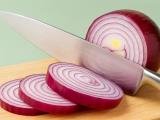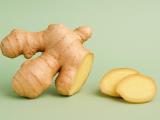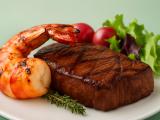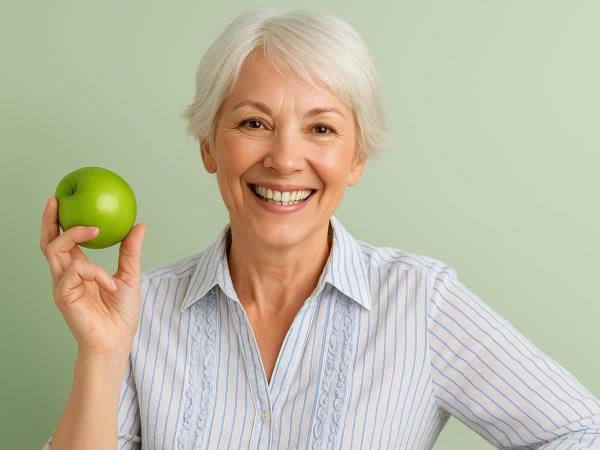According to research by the U.S. National Institutes of Health (NIH), more than 35% of people over 50 years old are deficient in vitamin D, and 20% of them lack vitamin B12. These two nutrients are closely linked to our mood, energy, muscle function, and even memory.
It is no wonder then that many older adults wonder: Why am I always so tired even though I eat normally? The answer often lies in these two quiet but crucial vitamin companions.
What Happens in the Body After Age 50?
As we age, the production of gastric acid in our stomach gradually decreases, a fluid that helps in digesting food and absorbing nutrients from it. This is nothing unusual. It's a natural process.
However, less acid also means poorer absorption (meaning uptake into the body) of certain vitamins, especially vitamin B12.
Nutritionist Erin Palinski Wade from the USA explains that more than half of people over 60 have reduced B12 absorption capacity, leading to fatigue, paleness, forgetfulness, and sometimes even impaired balance. Interestingly, symptoms are often attributed to age or stress, even though it's just a deficiency of a vitamin that could easily be replenished with proper nutrition.
Additionally, as we age, the skin's ability to produce vitamin D from sunlight decreases, a substance crucial for strong bones, muscles, and the immune system. A study by the University of Boston in 2020 found that a 70-year-old's skin produces 75% less vitamin D compared to that of a 20-year-old, even when both are exposed to the same amount of sunlight.
Furthermore, sunlight is too low between November and April for our bodies to produce enough vitamin D. During this time, most people don't produce any, so it's not surprising that over 80% of people are deficient in vitamin D during the winter months.
Vitamin D - The Sunshine Vitamin that Protects Bones and Mood
Vitamin D is not actually a vitamin in the traditional sense but more of a hormone that forms in our skin under the influence of sunlight. Its primary role is to help the body absorb calcium, a mineral that builds bones and teeth. Without vitamin D, the body can't utilize calcium, no matter how much milk or cheese we consume.
When deficient, bones start thinning and becoming porous (meaning brittle, full of tiny holes), leading to osteoporosis. In women, this happens even faster after menopause due to decreased levels of the hormones estrogen and progesterone that previously protected bone density.
A study by the National Institute of Public Health in 2024 showed that 70% of women over 55 show signs of decreased bone density, with about 45% of men affected as well. In both groups, vitamin D deficiency is a common denominator.
Vitamin D is not only important for bones but also helps the immune system, regulates mood, and reduces inflammation in the body. A study published in the Journal of Clinical Endocrinology in 2023 confirmed that people with low levels of vitamin D are twice as likely to experience fatigue and lack of energy, especially in winter and autumn months.
Vitamin B12 - The Vitamin for Blood, Nerves, and Memory
Another key vitamin after the age of 50 is vitamin B12, which plays a role in red blood cell formation and nervous system function. When levels are low, blood oxygenation decreases, meaning less oxygen reaches the brain and muscles. The result? Poor concentration, dizziness, paleness, and a feeling of never getting enough sleep.
Vitamin B12 is found almost exclusively in animal-based foods: eggs, fish, meat, and dairy products. Therefore, it is often deficient in vegetarians and vegans, as well as older adults whose stomachs can no longer break down proteins that carry this vitamin.
According to the European Food Safety Authority (EFSA), one in four Europeans over 60 has low vitamin B12 levels. Deficiency develops slowly; sometimes, it takes several years before the first signs like tingling in the fingers, numbness, forgetfulness, or weakness in the legs show up.
Eggs - Nature's Pharmacy in a Shell
If you had to choose a simple, inexpensive, everyday food to increase both vitamins, it would be eggs. One medium-sized egg contains approximately 0.9 micrograms of vitamin B12 (nearly 40% of an adult's daily requirement) and around 40 IU of vitamin D.
It's important to know that the vitamins are concentrated in the yolk, not in the egg whites.
So, when you separate the whites, you lose the most valuable part of the egg, which contains sun and nerve vitamins. That's why nutritionists recommend eating the whole egg, as the yolk also contains healthy fats, zinc, and iron, in addition to vitamins.
As people say: in the yolk lies the power of the sun. And that's true, literally.
Eggs are also an excellent source of protein. One serving (two eggs) provides 12 grams of protein, the amount needed daily for muscle building and tissue repair.
A study by Harvard University in 2021 confirmed that consuming two eggs a day does not increase the risk of heart disease, as once thought. On the contrary, in older adults, it helps maintain muscle mass and reduces feelings of fatigue.
Tuna and Salmon - Sea's Gift for Bones and Brain
While vitamin D literally comes from the sky in the form of sunlight, some can also be obtained from the sea. Fatty fish like tuna and salmon are true treasure troves of both vitamin D and B12. One serving of salmon (about 150 grams) contains as much as 570 IU of vitamin D, which is half an adult's daily requirement.
Canned tuna, which is more accessible and affordable, contains slightly fewer vitamins, approximately 260 IU of vitamin D and 2.5 micrograms of B12 per serving. It also contains omega-3 fatty acids that are proven to protect the heart and improve mood.
According to the World Health Organization's recommendations, adults should consume fish at least twice a week, preferably baked or steamed, to preserve the vitamins.
Simple Meal Idea: Tuna Salad with Greek Yogurt, Some Corn, Tomato, and Lemon Juice.
Greek yogurt itself contains additional vitamin B12 and is often fortified with vitamin D by the manufacturer, adding to its nutritional value.
Dairy Products and Sunlight - Dual Protection after Age 50
Milk, cheese, and yogurt are also natural sources of both vitamins. Many dairies started enriching dairy products with vitamin D after 2020, as analyses showed that the average person only gets 10-15% of the recommended daily amount from food.
So, if you have a glass of milk, eat an egg, and some salmon, you are already close to the target. But of course, sunlight is also essential!
Just 15 minutes of sunlight a day on your face and hands, without UV protection cream, is enough for the body to produce 600 to 1000 IU of vitamin D.
It's easy during the summer, but in winter, you can rely on natural sources like fish, eggs, mushrooms (mushrooms contain 400 IU of vitamin D per 100g), and milk.
Folk Remedies and Affordable Solutions
Our grandparents did not have laboratory tests, yet they knew when something was lacking in their bodies. If they felt tired, listless, or had knee pain, they would say they lacked sunshine in their blood. This was their way of describing a deficiency of vitamin D.
Simple folk remedies were:
- a spoonful of fish oil every day (though not the most pleasant, it worked),
- springtime walks in the sun,
- and regular meals with eggs, milk, and even onions, as they cleanse the blood.
Even though we now know scientific explanations, the essence remains the same. After 50, the body needs warmth, movement, good food, and light. Everything else is just supplementary.
How to Determine If You Lack Vitamin D or B12?
The most reliable indicators are blood tests, but there are also physical signs to watch for:
- frequent









 Would you like to be informed about news on the website?
Would you like to be informed about news on the website?

